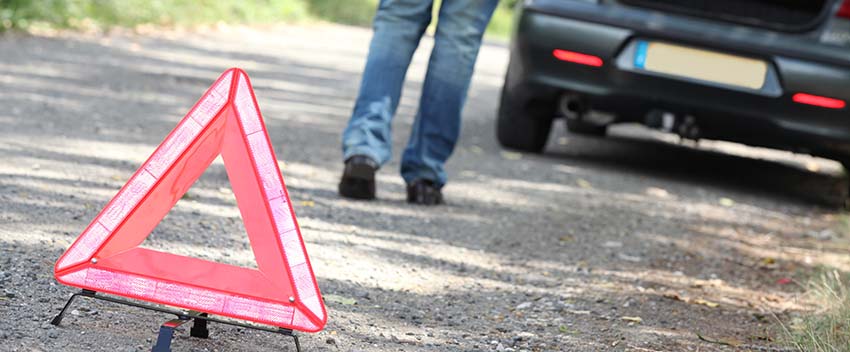
Written by – Chontell Flight
‘I’m definitely up for an inconvenient emergency’ – said nobody, ever!
At the core of effective safety management is strategic design. After all, most legislated and directive safety content exists because of shortfalls in systems or operations – allowing us the advantage of hindsight planning.
By that measure, how often do we consider the possibility of emergency occurrence while on our way somewhere? As the adage goes, “life happens while we’re making plans”. Obviously, if we knew an emergency was going to happen we’d be more likely to plan to prevent or mitigate the risks.
When it comes to creating your vehicle safety kit, I’m not talking about going overboard and excavating an emergency bunker in your backyard or purchasing radiation blankets – although that’s totally your prerogative. But rather, I am talking about the basic supplies which can be affordable to purchase online or at your local shops, and truly invaluable in the event of an emergency. At home, at work, when traveling or otherwise, I hope these suggestions help to get you started.
What to Include in Your Vehicle Safety Kit
1. Necessities
Why not start with the obvious? Extra toilet paper, wet hand wipes, hygiene products. Necessities are a very personal thing: whatever it is if you “just can’t live without it” because it’s important to you, include it in your emergency kit!
2. First aid kit (with all the fixings)
Bandages, sterile and latex-free supplies, forceps, scissors, gauze, compress dressings with ties, emergency blankets, antibiotic ointment, antiseptic towelettes, etc. Check out what the requirements are for your state worksites and start with that first aid kits contents list as a baseline and add your preferred additional items.
It may be a great idea to include Windlass Style Tourniquets and Fracture Straps as recommended by WorkSafeBC’s Level 1 first aid kit for low to high-risk worksites. Not all first aid kits require these – but they don’t expire, they’re great in a jam, and you’ll be glad you have them if you ever need them!
3. Hand Sanitizer
Hand sanitizer is great to have in your vehicle safety kit. After all, it’s been in our cars since the start of the pandemic, right? Sanitizers can be used to help sterilize our hands in a pinch so we don’t get sick after using the washroom somewhere without a sink or running water.
Bonus: Alcohol-based hand sanitizer doesn’t freeze in cold temperatures and helps to sanitize your skin and multiple types of surfaces!
4. Ingestible Items
This includes food, medicine, and beverages.
Drinks
Water! Be sure to account for freezing. Consider partially filling your water bottles in case they freeze in your vehicle during lower temperatures. You don’t want to have your bottle exploding due to expanding ice.
Medicine
Include basic pain medicine like Tylenol, Advil, or low-dose Aspirin, but also a few extra of any medicines you may be prescribed – in case an emergency event takes you away from your regular schedule. It is also important to note here that most medications (even over the counter) have suggested temperature ranges. It might not be ideal to store some of these items in your vehicle if the temperatures in your area swing wildly.
Snacks
Be sure to include items that have a longer shelf life or non-perishables, something with higher calories, and something individually packaged/sealed like; protein or cereal bars, trail mix, canned fruit, beef jerky, and other low perishable foods.
Ever use a self-heating instant hot pot? Grab one at your local variety store. You add a few packets to water and it boils with a chemical reaction and produces a quick, hot, hearty meal!
I realize some of these food suggestions may be a little outlandish compared to some you may have seen from other sources – many of which recommend emergency packets of food and water (usually with a ~ 5-year shelf life). But I believe the contents of a kit are only good if we are actually going to use them. If you’re stuck in traffic running late to a worksite inspection, you are better prepared if you can grab a snack you’ll actually use – and a packet of ultra preserved food not actually meant to be eaten is unlikely to be a top pick.
Refreshments are good to grab in non-emergency situations too. Stayed too late at the office, early morning breakfast when you left too late for the worksite? Snacks to the rescue!
This helps to keep blood sugar levels balanced and to keep away cases of the ‘hangries’ – since hunger pangs cause distraction, increase irritability, and shorten our temperament. We know these create circumstances of increased risk toward motor vehicle incidents. Keep a cool head and have a bite instead!

5. A Light
Glow Sticks, tea-lite candles, lighter
A small candle can offer a great deal of light and heat in a small, enclosed space!
A glow stick can offer immediate low-level light in the worst situations.
6. Roadside Emergency Kit
These can be purchased at safety specialty stores as well as big-box stores, and often includes a flashlight, reflective roadside triangles, flares, etc.
Manufacturers’ recommendations should also be considered when thinking about roadside emergencies. Be sure to follow the handbook for your vehicle and confirm the availability of a spare tire, jack, lug wrench, etc.
If you live in a really cold part of the US or Canada, you may want to include booster cables and an extension cord for your battery – it never hurts to be prepared!
7. Multitool
The Swiss army knife of car safety: Many models can cut seatbelts, break glass, test tire pressure, act as scissors, screwdrivers, pliers, and more! They are also super handy as keychain attachments. For push-start vehicles that don’t require the key in the ignition, it may be a good idea to secure one of these multi-tools in your sun visor instead. These can be a real lifesaver in a pinch! Be sure to choose one that is stainless steel with a non-slip grip.
8. Warm clothing / extra layers
As we exit winter we can get a little over-excited about the warmer weather. This excitement often leaves us unprepared and left in the cold. Don’t forget an extra sweater, hat, mitts, and socks for times you are broken down and need warmth and dry clothes while you wait for roadside assistance – even in the summer!
9. Alternative Items
- Can opener if packing any canned goods
- Wind up radio
- Notebook and pencil/pen
- Knife (if your multi-tool doesn’t have one)
- Hand warmers
- External mobile charger and cord for charging your dead phone
OTHER TIPS FOR YOUR VEHICLE SAFETY KIT
- If you’re really safety conscious, electronic SOS systems are a great addition to your vehicle safety kit at a low cost (comparably) and allow access to calls and texts outside the service area with satellite technology. Many even include location tracking and a one-click emergency SOS button to notify authorities of medical or other emergencies at your location in times of distress.
- Inspect monthly to ensure supplies remain intact, charged, and in condition for use. Remember: documenting your inspection and corrective actions is a great way to demonstrate due diligence! Workplaces may also include additional required items on a pre-trip, like fire extinguishers, fire-rated coveralls, etc.
- Keep stocked with items in the average quantity of the number of people typically in your car. For example, larger workgroups, or larger families, might prepare their kit with additional supplies.
- Store your gear in a small carry-on sized suitcase in your trunk/ floor of the back seat so everything is organized, available, accessible, and protected.
Of course, this list is not comprehensive. Consider what additional items you can add to your own personal or work vehicles to ensure you are best prepared for all of life’s emergencies. If you would appreciate having an item in the event of an inconvenient situation, it may be important for your kit. We often think of vehicular emergency kits for the times we’d be trapped in a snowbank like in a thriller flick. Instead, consider all types of emergencies or mishaps are most likely to encounter.
I hope this guideline inspires you to do something you’ll thank yourself for later – be prepared.

Written by Chontell Flight– Chontell is a Certified Health & Safety Consultant at Rock Solid Safety Solutions with 10 years of industry experience and COR auditing expertise.
Safety blogger & self-proclaimed safety nerd.
‘My goal is to foster interest in safety management using innovative and creative solutions to reduce risk and refine systems. To encourage and motivate personnel toward successful involvement in safety program customization, team building, and promoting a positive safety culture. I believe all people can offer constructive contributions toward safety management for the greater good.’






























